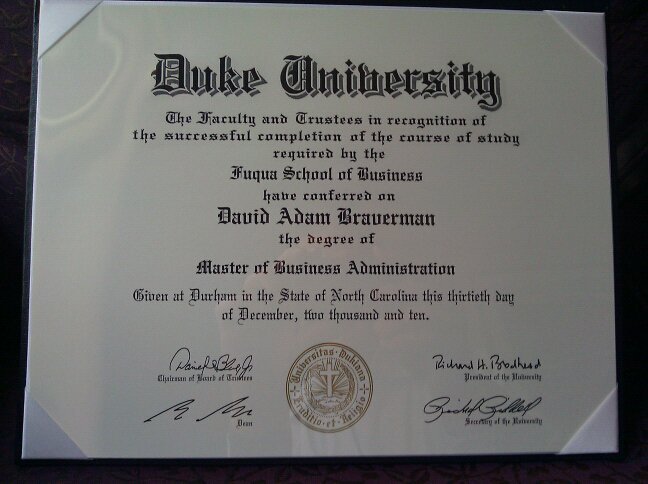Generally, I prefer to learn new things by reading first, then doing. I mentioned Wednesday that I've grown dissatisfied with my photography skills, so naturally, I'll go first to Amazon. You know: read about a technique, try it out, post the results online, rinse and repeat.
So it seems somewhat odd to me that most of Amazon's top-rated books on photography—like this one on Photoshop—have Kindle editions that cost almost as much. Because nothing will help someone understand how to do advanced photo editing than 10 cm, 18 dpi halftones, right? Even stranger: the example I just cited has a companion DVD, which I assume does not come with the Kindle version. That, to me, puts the F in WTF.
Officially and virtually, I've had this since December 30th. I do like having the hard copy though:

Girlyman played Evanston SPACE last night:

Coyote Grace is touring with Girlyman this year; I'll be looking for them again. Also, surprise musical guest The Shadowboxers, who graduated from college Wednesday, led the show with a 4-song set. Again, another band I need to follow.
I'll have more photos next week. Tomorrow I'm off to Duke for our graduation ceremony. The school awarded our degrees in January (retroactive to December 30th), but I still want to walk—and see my classmates. Only, with work, a 7am flight to RDU, and everything going on this weekend, I don't expect to have time to organize last night's photos for a few days.
I will say this: even with the 7D's amazing low-light abilities, shooting a concert is hard. I experimented with a dozen or so combinations of ISO, aperture, and shutter, and I quickly put away my 18-55mm zoom in favor of a 50mm f/1.8 prime lens. The shot above was ISO-3200, 1/125 at f/1.8. I tried slower shutters with tighter apertures but the band were so energetic that led to lots of subject movement. Lower ISOs gave me less grainy photos, but again, required slower shutter speeds, so they weren't quite up to my standards. And black & white, which ordinarily covers many sins in variable-light environments, didn't look right, because the lighting makes up part of a live performance's appeal.
I also shot about 18 minutes of video (which looks OK, actually), making my total haul for the evening a whopping 12 GB. I don't think I can post any video, though. (Pesky copyright laws.) If I find out from the band it's all right to do so, I'll put some up.
Apparently "gardener" makes more sense than "engineer:"
So why do so many gardens fail, yet so many skyscrapers succeed? With a few exceptions, the technique for building a skyscraper is similar whether you are in Europe or you are in Singapore. Gardens do not work that way. Every garden is different because the environment it is in is different. Even gardens that are within throwing distance of each other can have wildly different soil. That is why the lowest bidder can probably build the same bridge as the highest bidder, but your company can’t grow the calibre of gardens that Google can grow.
Remember that time when someone in your company unsuccessfully used an Agile gardening methodology, and then went around saying that it was horse shit that doesn’t work? Well horse shit does grow gardens, it just wasn’t enough to save your garden. Your garden was probably dead before it started – a victim of the climate of your organisation. Were you trying to grow a rainforest in the desert? You can’t just plant the same plants as Facebook, Flickr or Twitter and expect them to take root regardless of the quality of your gardeners or the climate of your organisation.
(Hat tip MVT.)
Via one of my cow-orkers, a company that can tell you all about yourself at a hitherto-impossible level of detail. All you have to do is spit:
23andMe is a retail DNA testing service providing information and tools for consumers to learn about and explore their DNA. We utilize the Illumina OmniExpress Plus Research Use Only Chip which has been customized for use in all of our products and services by 23andMe. All of the laboratory testing for 23andMe is done in a CLIA-certified laboratory.
How does 23andMe genotype my DNA?
Once the lab receives your sample, DNA is extracted from cheek cells in your saliva. Your DNA is then copied many times so that there is enough DNA to use for the genotyping step. Next, the DNA is cut into smaller, more manageable pieces. These DNA pieces are then applied to a DNA "chip." The DNA chip is a small glass slide with millions of microscopic beads on its surface. Attached to each bead are "probes"—bits of DNA complementary to sites in your genome where SNPs are located. There is a pair of probes for each SNP, corresponding to the two versions of each SNP. Because two complementary pieces of DNA stick together, your DNA sticks to whichever probes match your versions of a SNP.
The service claims to do the following:
- Identify health risks based on genetic propensity (and quantify how much of the risk is genetic);
- Tell you where your family came from, and when they got there, going back several thousand years;
- Find your long-lost cousins; and
- Send you updates as new research comes in.
My colleague paired this suggested site with this TED talk about the future of human evolution.
Remember when Gattaca was just an interesting fiction? Let's hope not all of Andrew Niccol's predictions come true...
Fascinating, and not bad at all. Writer/director Sebastian Gutierrez assembled a top-notch cast (Danny DeVito, Carla Gugino, Zachary Quinto) and put them into a watchable, funny film—only available on YouTube. If your line supports it, watch in HD. Alas, I think it's only available in the U.S. for the time being.
Gulliver this afternoon examines whether we might want to examine them:
A new academic paper [PDF] from John Mueller (of The Ohio State University) and Mark Stewart (of the University of Newcastle in Australia) attempts to determine whether the return on investment justified those huge expenditures. ... [T]he findings in this paper are truly remarkable. By 2008, according to the authors, America's spending on counterterrorism outpaced all anti-crime spending by some $15 billion. Messrs Mueller and Stewart do not even include things like the wars in Iraq and Afghanistan (which they call "certainly terrorism-determined") in their trillion-plus tally.
"[A] most common misjudgment has been to embrace extreme events as harbingers presaging a dire departure from historical patterns. In the months and then years after 9/11, as noted at the outset, it was almost universally assumed that the terrorist event was a harbinger rather than an aberration. There were similar reactions to Timothy McVeigh’s 1995 truck bomb attack in Oklahoma City as concerns about a repetition soared. And in 1996, shortly after the terrorist group Aum Shinrikyo set off deadly gas in a Tokyo subway station, one of terrorism studies' top gurus, Walter Laqueur, assured the world that some terrorist groups 'almost certainly' will use weapons of mass destruction 'in the foreseeable future.' Presumably any future foreseeable in 1996 is now history, and Laqueur’s near 'certainty' has yet to occur."
The paper also found that anti-terror spending has outpaced anti-crime spending by some $15 bn, despite crime costing society significantly more. The paper doesn't go into the politics of why this might be so, but I'll hazard a guess that cutting crime benefits more people a little while spending on anti-terror measures benefits a few people quite a bit. Lowering the likelihood that my car will suffer $300 in damage from a break-in has less immediacy than a $30m contract for a new security gadget would were I in that line of business.
Every day a few minutes past midnight UTC (7pm CDT), I get a report from The Daily Parker about its health, wealth, and wisdom. And every day, someone hits the blog from somewhere through a search I never thought about before. In the last day, for example, people have hit the blog looking for:
I'm glad I could help.
Via Fallows, UC Berkeley biologist Michael Eisen watched a used book price war between two bots that ended...oddly:
Once a day profnath set their price to be 0.9983 times bordeebook’s price. The prices would remain close for several hours, until bordeebook “noticed” profnath’s change and elevated their price to 1.270589 times profnath’s higher price. The pattern continued perfectly for the next week.
But two questions remained. Why were they doing this, and how long would it go on before they noticed? As I amusedly watched the price rise every day, I learned that Amazon retailers are increasingly using algorithmic pricing (something Amazon itself does on a large scale), with a number of companies offering pricing algorithms/services to retailers. Both profnath and bordeebook were clearly using automatic pricing – employing algorithms that didn’t have a built-in sanity check on the prices they produced. But the two retailers were clearly employing different strategies.
What’s fascinating about all this is both the seemingly endless possibilities for both chaos and mischief. It seems impossible that we stumbled onto the only example of this kind of upward pricing spiral – all it took were two sellers adjusting their prices in response to each other by factors whose products were greater than 1.
When Eisen published his blog entry the book had dropped to $106—or $135 through bordeebook. Just now, though, bordeebook has it for $977, and profnath seems not to have it any more. I wonder what happened there.
Back in my last term at Duke our technology strategy professor, Wes Cohen, assigned us two chapters from The Soul of a New Machine by Tracy Kidder. I'm reading the whole book now that I've got some time. Anyone who has the least interest in how teams work and where technology comes from should read it.
 Kidder embedded himself in a team at the Data General corporation from early 1978 to late 1979 as they struggled to bring a 32-bit minicomputer to life. He describes borderline-Apergers engineers, 14-hour days, building motherboards from scratch, untested technologies, irresponsible schedules, burnout, and success—all around a computer that expressed the state of the art for perhaps six months after it came out. When Kidder wrote the book, in 1980, neither he nor any of the people he wrote about knew that minicomputers had become obsolete as a class already. None of them could see that IBM's toy computer, the PC, was about to make Data General irrelevant.
Kidder embedded himself in a team at the Data General corporation from early 1978 to late 1979 as they struggled to bring a 32-bit minicomputer to life. He describes borderline-Apergers engineers, 14-hour days, building motherboards from scratch, untested technologies, irresponsible schedules, burnout, and success—all around a computer that expressed the state of the art for perhaps six months after it came out. When Kidder wrote the book, in 1980, neither he nor any of the people he wrote about knew that minicomputers had become obsolete as a class already. None of them could see that IBM's toy computer, the PC, was about to make Data General irrelevant.
Kidder describes the team debugging prototype CPUs using oscilloscopes. He explains the near-impossibility of writing microcode—the instructions that tell a physical set of chips what to do and in what order—without using a second computer to write it on. He talks about engineers carrying around punchboard covered in blue and red wires, the red ones representing bug fixes, the blue representing the first attempt. You think it sucks figuring out which class broke the build in a modern C# development environment? Try imagining your joy at discovering that the CPU didn't work because a piece of solder came undone.
I imagine my reaction to this book might be similar to that of a modern nuclear submariner reading a contemporary account of building a state-of-the-art wooden battleship in 1862 (with only a brief mention of the Monitor and Merrimac, because almost no one understood in 1862 what those ships meant to naval combat). There are parts that made me wince, exactly as I winced in the episode of Mad Men when they showed an invitation to a wedding—to be held 22 November 1963.
About two years ago I read Pete Peterson's account of the heyday of WordPerfect Corp., which I also recommend, but for different reasons. Peterson wrote knowing the outcome, and he also had an axe to grind; but "Almost Perfect" still hits me right in the gut as a practicing software developer.
Twenty or thirty years from now, I'll look back and laugh at everything I didn't know in 2011. The Soul of a New Machine is a brilliantly-written monument to getting the job done, and advancing the profession right into a cul-de-sac.